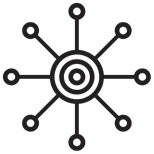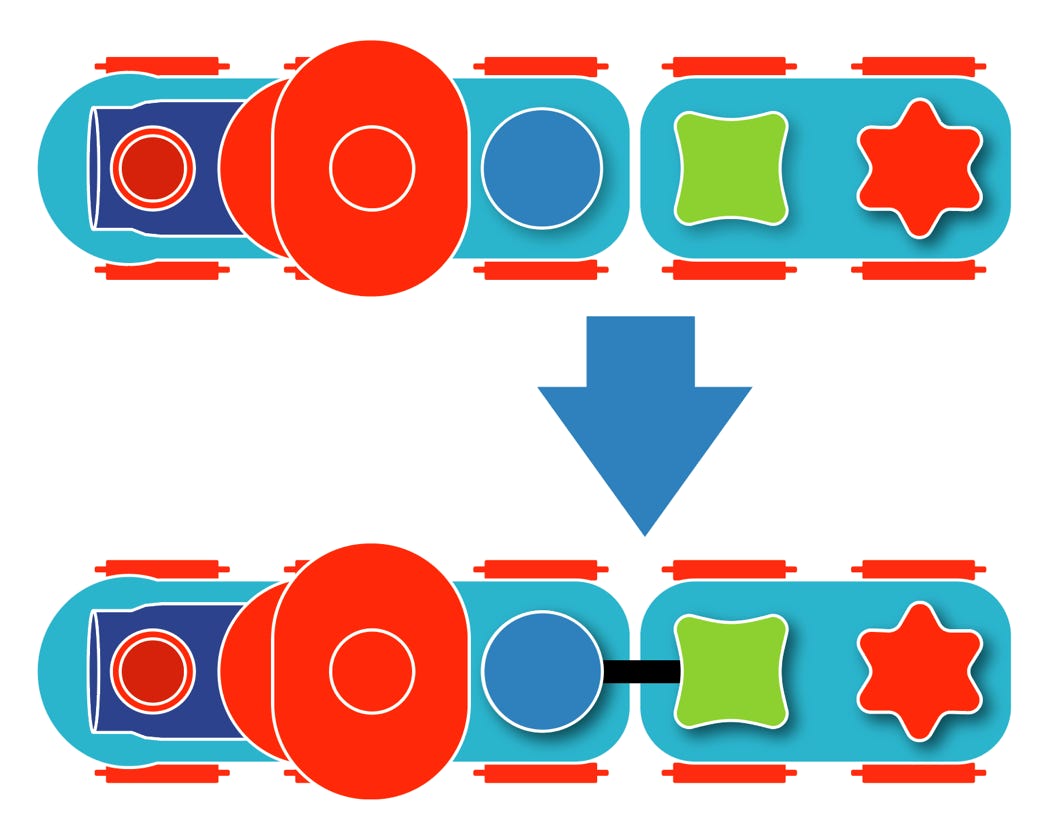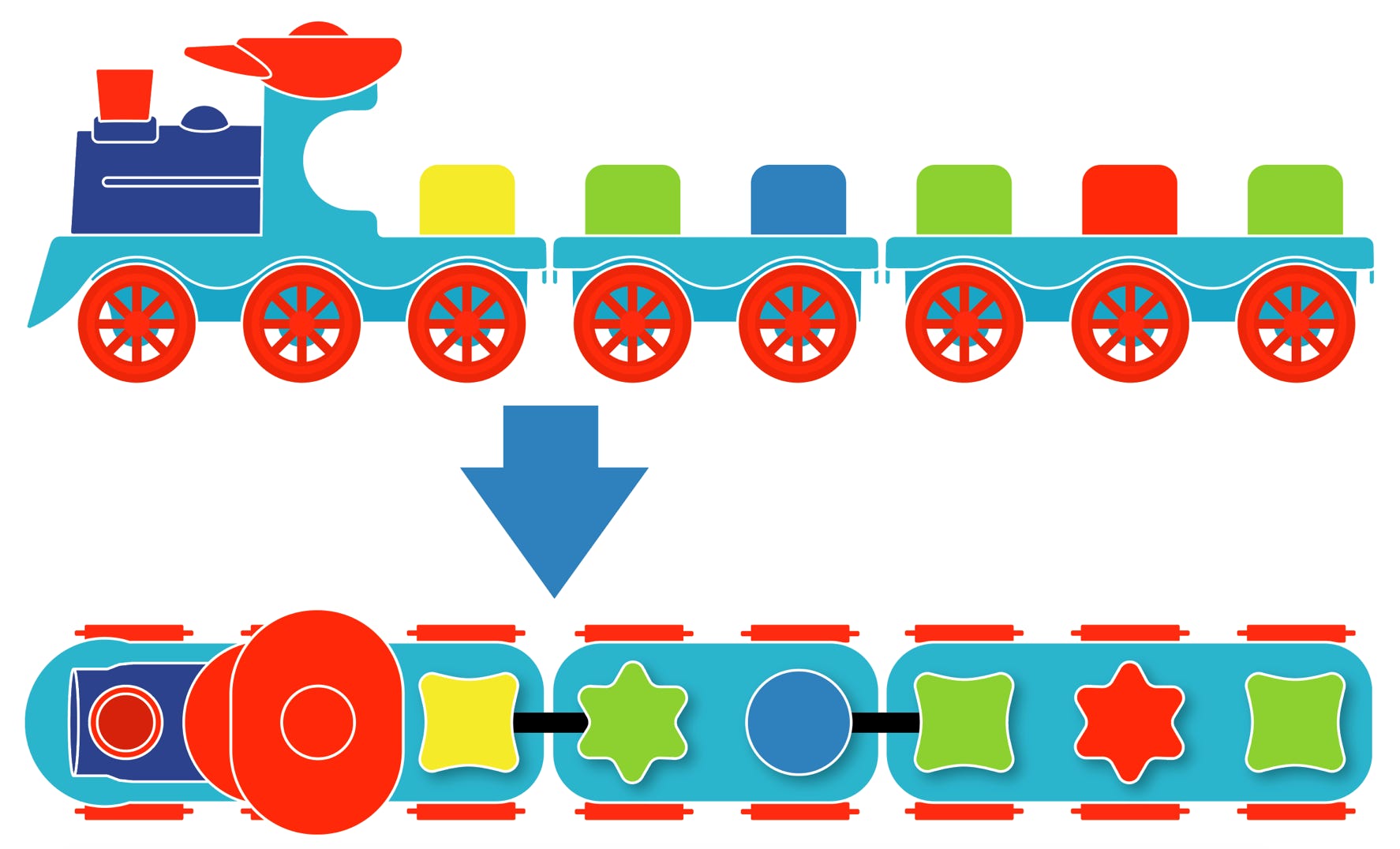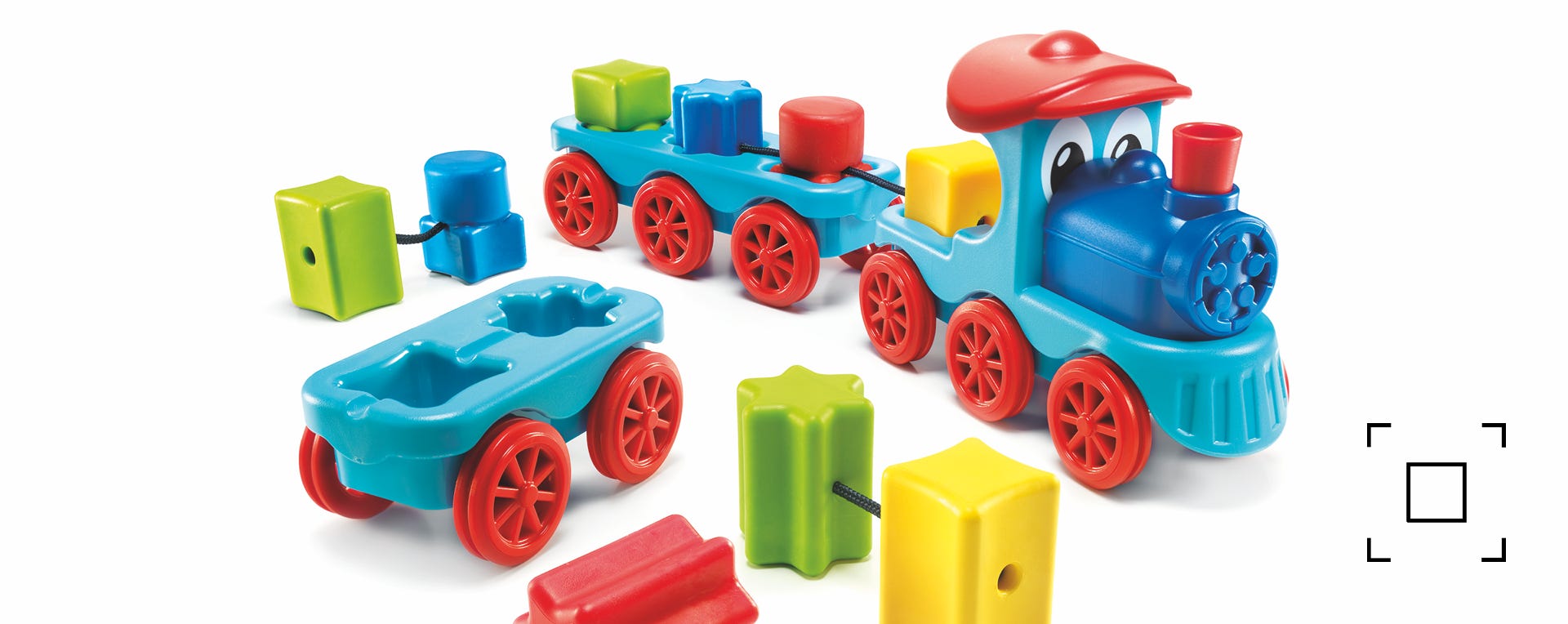
Brain Train
The story behind the creation of Brain Train (for SmartGames)
Raf Peeters, January 2019
BrainTrain is a new preschool game I designed for SmartGames in 2018. Originally it was intended to be made partly in wood, but because of the high cost we switched to ABS plastics later during the development.
When I was a kid, one of my uncles had a simple wooden train in his living room. It was nothing special, but I always loved the fact that you could connect the wagons and fill them with little figurines. The best toys are often the simplest. Many years ago I started working on my own wooden train project. The basic idea was also to fill the train with figurines. Some of those figurines would be connected to each other. If you placed them in the right order, you could also connect the wagons to each other.
We made a few prototypes in wood, but they all looked very boring. It was also too difficult for little children to manipulate. A toy for that age needs to be self explanatory.And the figurines didn’t really stay inside their wagons. So I shelved the idea because it was not good enough (yet).
Last year I wanted to give it another try. For the fairy tales of SmartGames we often use a material named TPR (thermoplastic rubber), which is soft and flexible. So I replaced the wooden figurines with TPR blocks. These would stay better in place, because of the friction between the flexible blocks and the wagons.
But the biggest change was that I changed the colored figurines in different shapes. This way the challenges became a lot more interesting and the concept explains itself. The resulting product is a mix of a shape sorter and a logic puzzle. I choose for a square, circle and 6 pointed star, because the shapes needed to stay identical when mirrored (or when you place them upside down).
For very young children who don’t understand the concept of “challenges and solution’ yet, the train is a shape sorter. Just try to connect all wagons by inserting the shapes. The locomotive has one empty slot. Then there is a wagon with two and a wagon with 3 slots. This already results in 15 different combinations of trains you can build. By adding the colors and shapes of the puzzle pieces, the number of possible trains further goes up. Some blocks are doubled sided. On one side they are square and on the other side they are circular. Challenges only show the shape which is visible from the topside.
The game includes 9 blocks, although you only need 6 if you want to make the longest possible train (with the locomotive and the two wagons). So each time you will at least have 3 block left over. Brain Train includes the following combinations of blocks:
• 2 single blocks
• 2 combinations of 2 different blocks
• 1 combination of 3 different blocks
Easy challenges show the color and position of the wagons and the blocks. Harder challenges give you less information. For example the color of the blocks is missing or their shape (by showing only a side view). The master level doesn’t even show the order of the wagons. Solutions always show a top view and indicate which blocks are connected.
My colleague Tom suggested to make the roof of the locomotive like a hat. It looks a little bit like the hat of a train machinist, which in a way makes sense, although I didn’t like it in the beginning. Sometimes you start with a specific image in your head of how something should look like and you need some time to let that go, before you can accept another new (better) one. Especially when you are a stubborn designer like me ;-)
This game will not be available until summer 2019, because we first need to do more testing with the challenges and still have some work on the packaging.

example of an easy challenge (on top) and solution (below) showing a train with only 1 short wagon and 3 blocks

example of a harder challenge (on top) and solution (below) with all the wagons and 6 blocks.
GAME RULES BRAIN TRAIN
1) Choose a challenge. Challenges show either the top view or a side view of the train.
2) Fit the blocks in the train so that the colors and shapes match the challenge:
- Blocks must fit inside the openings of the steam engine and wagons.
- All spaces must be filled with a block, there will be no empty spaces in the solution.
- In some challenges not all blocks/wagons will not be used. Count the number of blocks/wheels to determine how many blocks and wagons you need.
- Some blocks have 2 sides with different shapes. Only the shape visible on the topside is shown in the challenge.
- Wagons must be connected to each other and to the steam engine.
- Harder challenges offer fewer hints:
- White blocks indicate the colors that are not revealed. Use deduction skills to figure out what colors should be placed!
- Side view challenges hide the shape of each block.
- In Master challenges the order of the wagons is not revealed.
3) There is only 1 solution, shown on the backside of each challenge.
Hints for parents and teachers:
Although this game might seem easy for adults, it can be a real challenge for young kids. If kids have trouble finding the solution, don't take away a learning opportunity by solving it yourself. Try to help by asking questions like:
- Why do you think this shape should be placed here?
- Where do you think is the best place to start? Why?
Website ©2019 Raf Peeters
Products and images: © Smart
